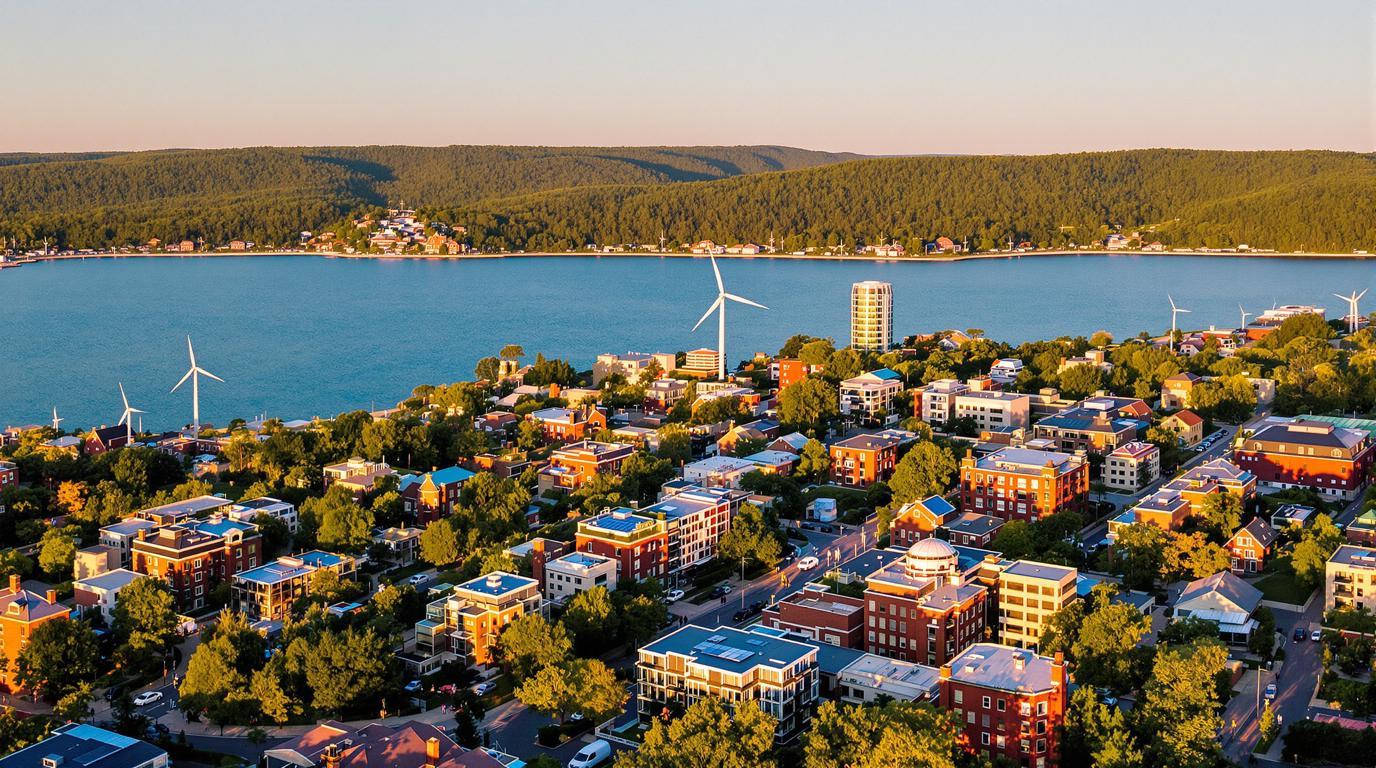The concept of “climate havens” is rapidly evolving from academic theory to practical reality. As climate change intensifies, these perfectly temperate locations offer refuge from extreme weather events, rising seas, and unpredictable seasons. Unlike climate disaster zones, these areas enjoy consistent temperatures, reliable water sources, and environmental stability that makes everyday life not just bearable, but genuinely pleasant.
The science behind climate stability
Climate havens aren’t just comfortable places—they’re scientifically identified regions predicted to withstand the worst effects of our changing planet. Factors like elevation, distance from coastlines, reliable water sources, and geographic buffers from extreme weather patterns create these sanctuary zones.
“What separates a true climate haven from simply a nice place to live is resilience infrastructure,” explains Dr. Jesse Keenan, climate adaptation expert. “Cities like Buffalo aren’t just temperate—they’re actively preparing their systems for the future.”
Great Lakes guardians: America’s temperature sweet spots
The Great Lakes region has emerged as America’s premier climate haven corridor. Cities like Duluth, Minnesota; Buffalo, New York; and Ann Arbor, Michigan benefit from massive freshwater resources that moderate temperatures year-round and provide drinking water security that southwestern states increasingly lack.
Buffalo’s renaissance represents this trend perfectly. Once suffering from industrial decline, the city now attracts climate-conscious residents drawn to its stable snowfall patterns, lake-effect cooling during summers, and affordable housing markets.
Global temperate treasures worth considering
Beyond American borders, several regions offer remarkable climate stability. New Zealand, with its ocean-moderated temperatures and progressive climate policies, ranks among the world’s premier climate havens. Parts of Iceland, certain French islands, and specific regions of the United Kingdom provide similar benefits.
For those seeking warmer yet stable environments, destinations maintaining perfect 25°C temperatures while other regions experience extremes offer comfortable alternatives to climate instability.
Hidden gem: Asheville’s microclimate miracle
Nestled in North Carolina’s Blue Ridge Mountains, Asheville benefits from an extraordinary microclimate that moderates both summer heat and winter freezes. The city’s elevation and surrounding mountains create natural protection from severe weather systems that plague coastal areas.
“Our mountains aren’t just beautiful—they’re functional climate infrastructure,” notes local meteorologist Sarah Jenkins. “The elevation gradient creates diverse growing zones within just miles of each other, supporting remarkable food security.”
Water access: the defining feature of tomorrow’s livable cities
Climate experts increasingly point to freshwater access as the single most critical factor in climate haven status. The Great Lakes contain 20% of Earth’s surface freshwater, making surrounding communities intrinsically valuable as water becomes increasingly scarce elsewhere.
Burlington, Vermont’s position on Lake Champlain provides similar advantages, with residents enjoying both recreational opportunities and water security that desert cities can only dream about.
Cultural treasures in climate-stable zones
Many climate havens offer rich cultural experiences beyond environmental stability. Medieval villages with ancient abbeys and hidden archaeological wonders often exist in regions selected for their temperate conditions centuries ago.
Today’s climate migrants follow patterns established by ancient civilizations that recognized these geographic sweet spots long before modern climate science confirmed their value.
Economic renaissance in unexpected places
Cities like Pittsburgh and Cincinnati are experiencing revitalization partly driven by climate advantages. Once industrial centers left behind in economic transitions, these river cities maintain water access, cooler temperatures than southern states, and infrastructure designed to handle weather variability.
Housing markets reflect this shift, with property values steadily climbing in climate haven regions while formerly desirable areas facing water shortages or frequent natural disasters see fluctuating markets.
Natural wonders in temperate zones
Climate havens often harbor extraordinary natural features. Unique geological formations like French volcanoes with color-changing gemstones frequently occur in climate transition zones that demonstrate remarkable stability.
These geological treasures often indicate regions that have maintained consistent conditions for thousands of years—a promising sign for future climate stability.
Preparing for the future
The most forward-thinking climate havens aren’t just benefiting from fortunate geography—they’re actively preparing infrastructure for population growth and changing conditions. Cities like Madison, Wisconsin have implemented green infrastructure, renewable energy systems, and climate-responsive building codes.
As climate migration accelerates, these communities balance welcoming newcomers while preserving the qualities that make them desirable in the first place.
The search for perfect climate conditions isn’t merely about comfort—it’s increasingly about survival. These temperate zones offer glimpses of sustainable living that balance human needs with environmental limitations, potentially serving as models for adaptation strategies worldwide. Their existence reminds us that even in a changing climate, remarkable places of stability and beauty endure.
